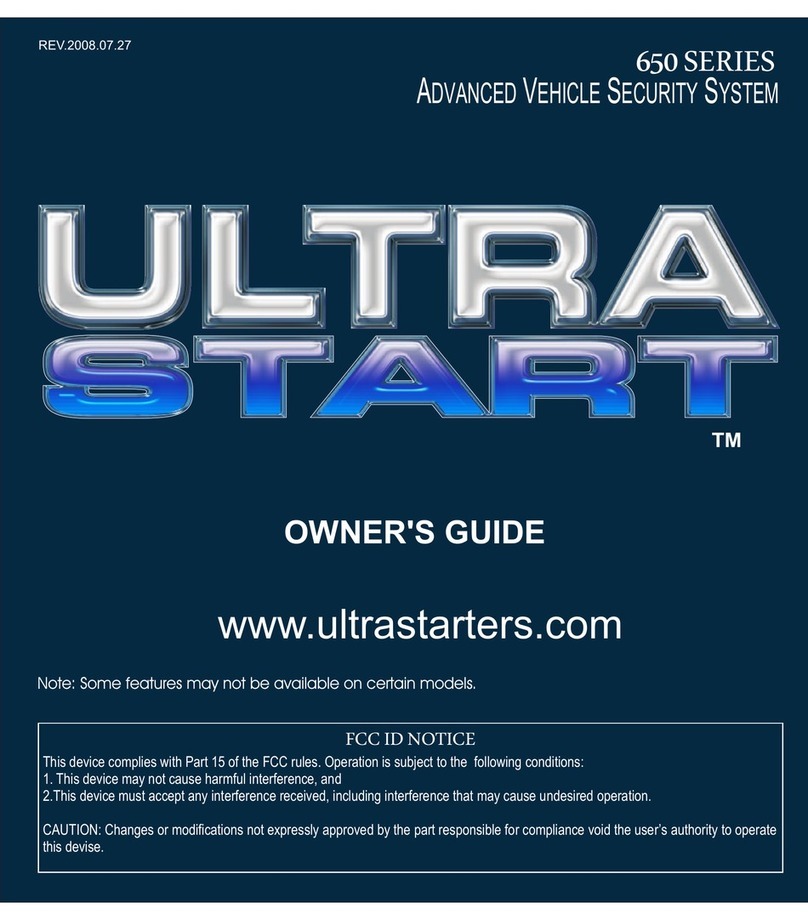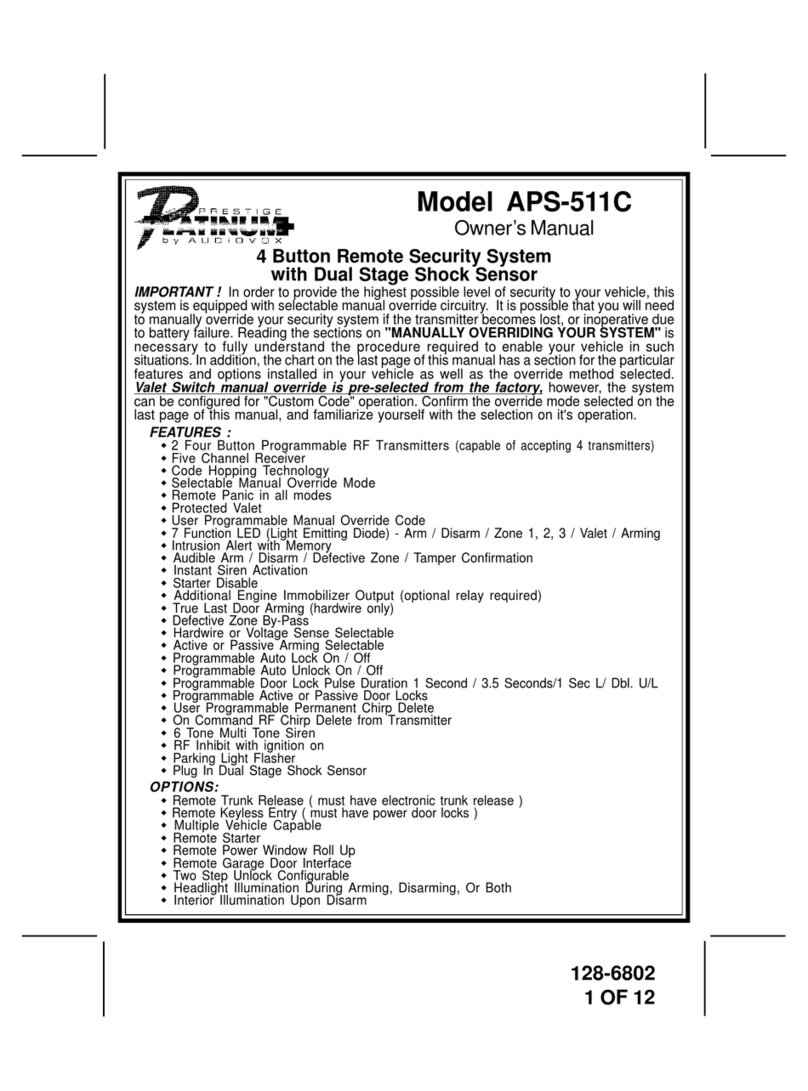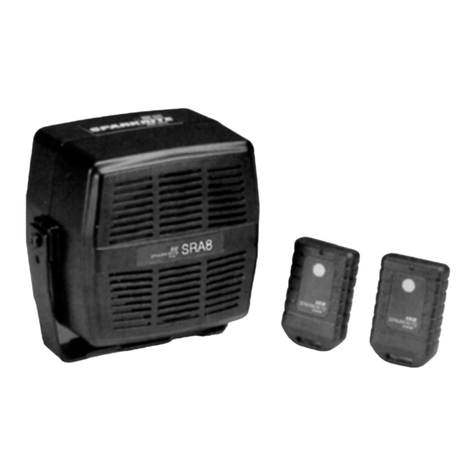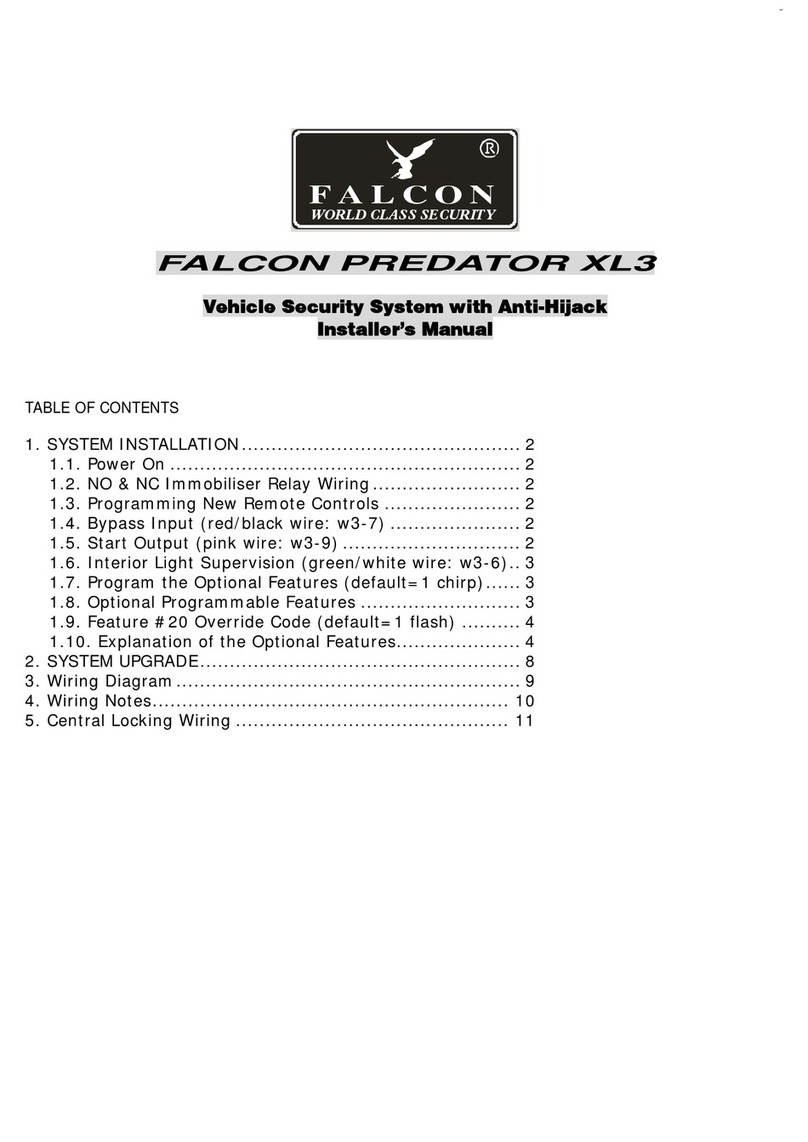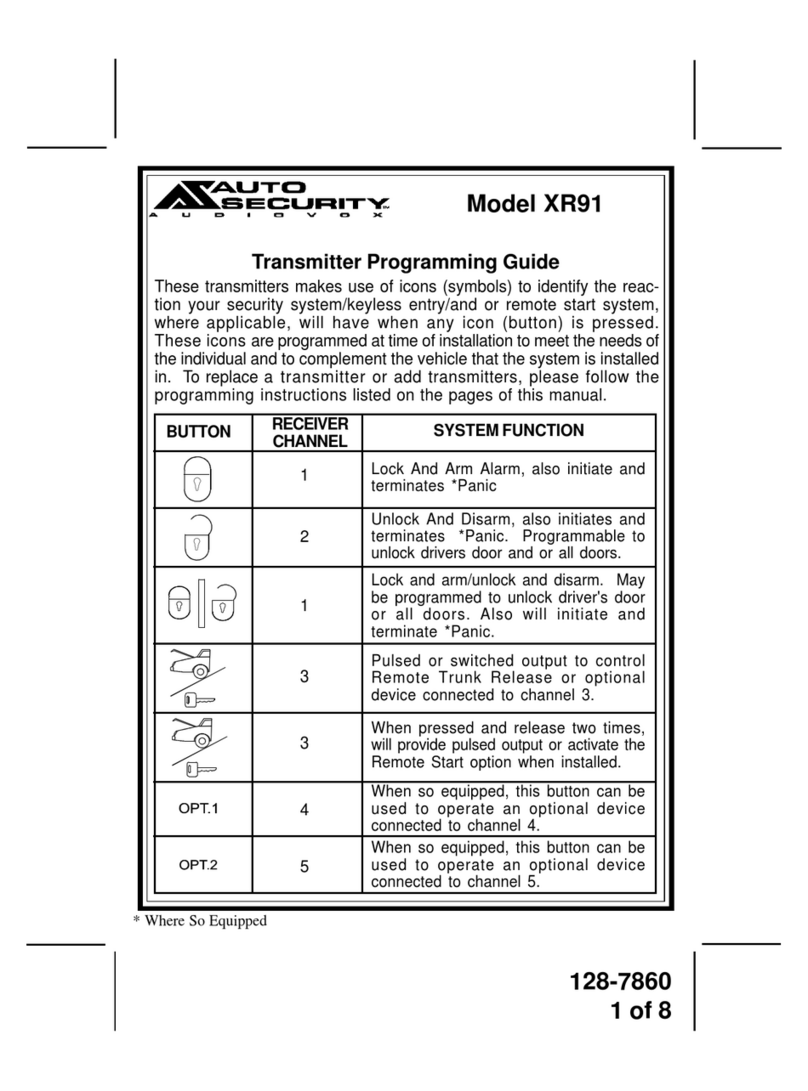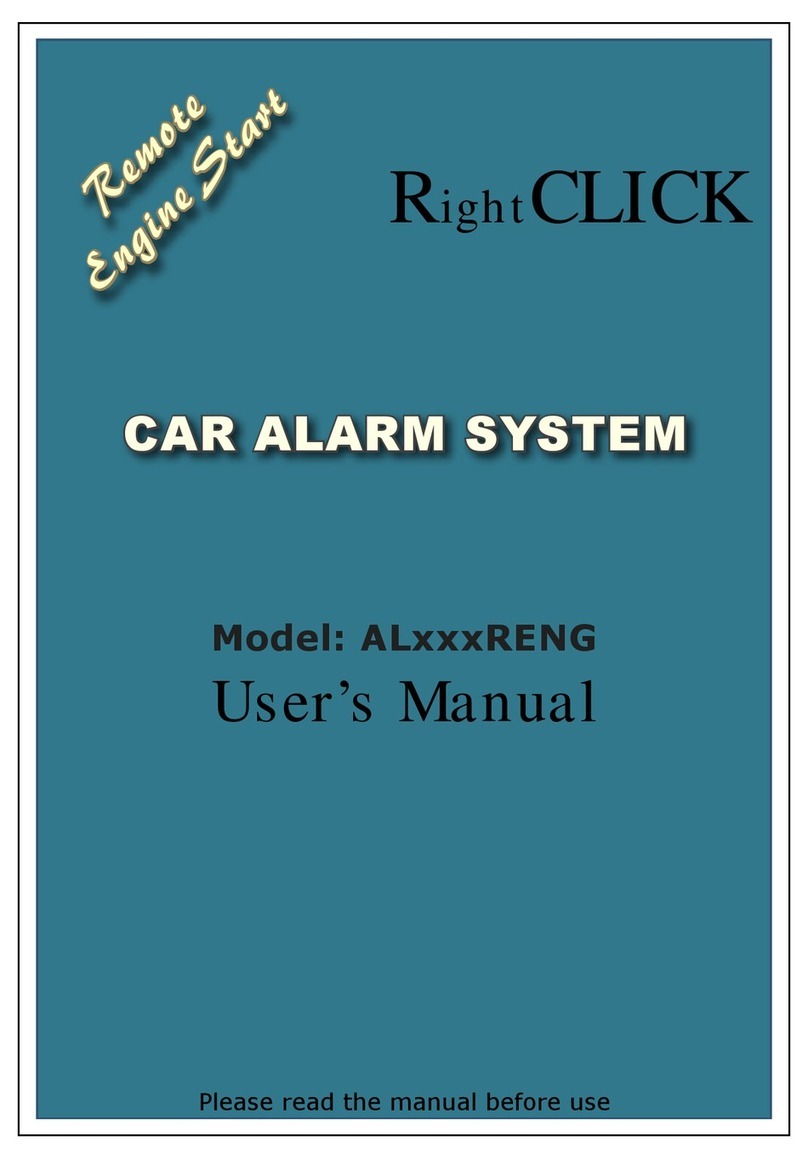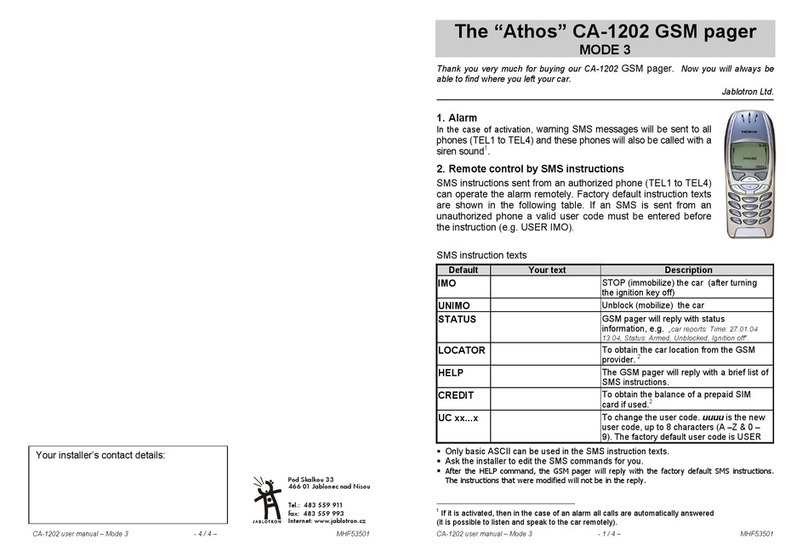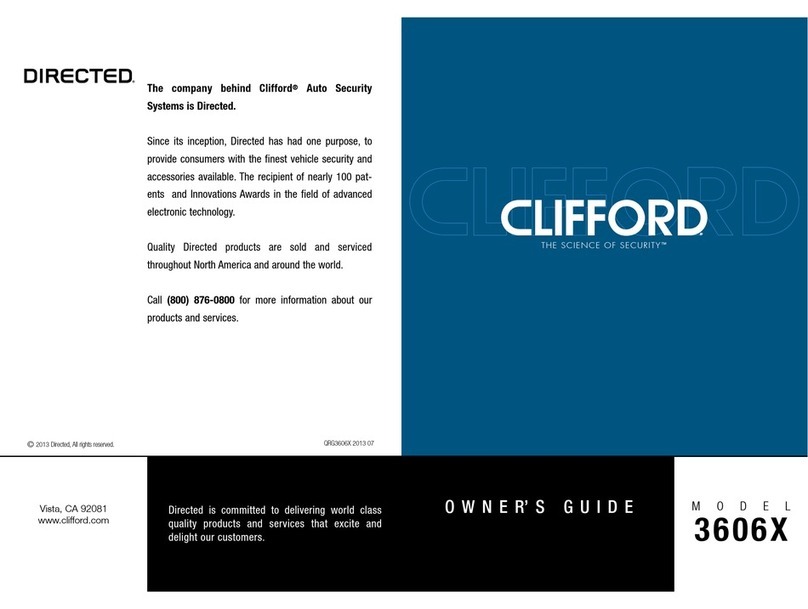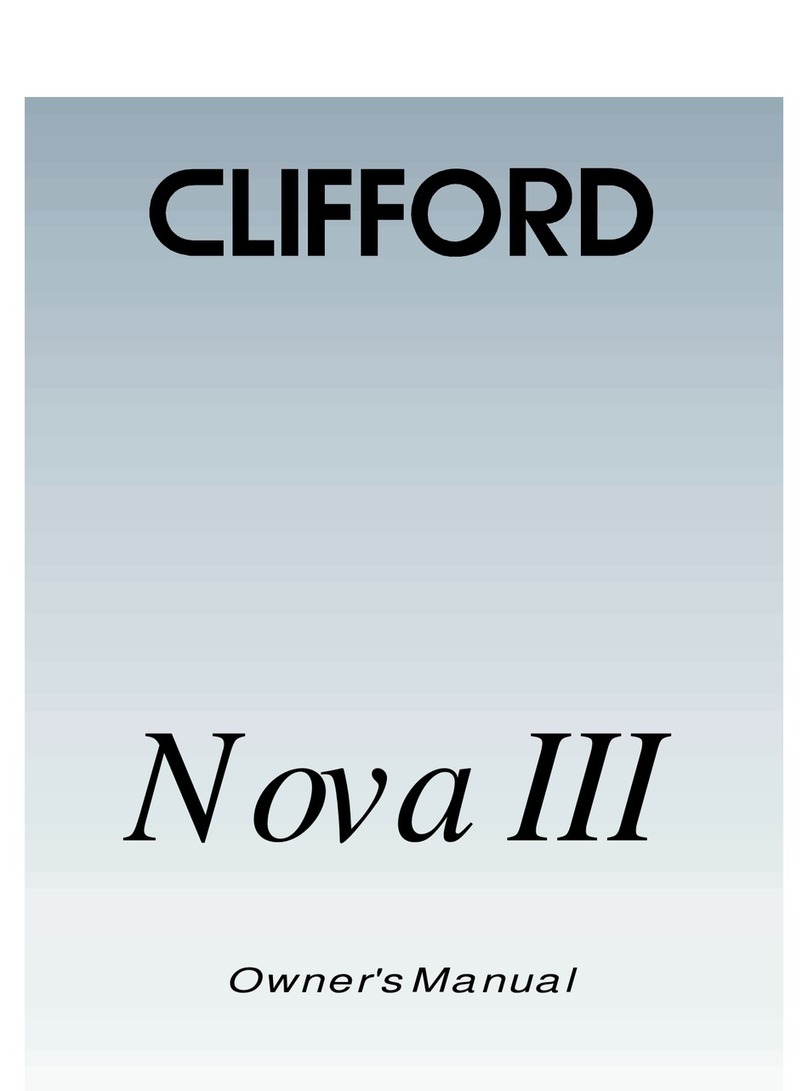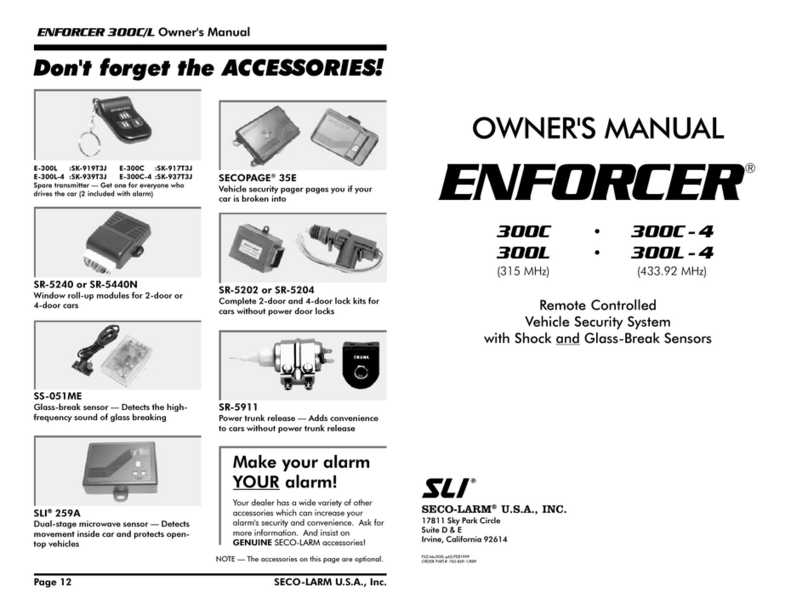
RightCLICK
Finding The Door Pin Switch Circuit
The best places to nd the door switch wire are:
At the pin switch: when testing the pin switch, check wire to ensure that it “sees” all the doors. Often,
the passenger switch will cover all the doors even if the driver’s switch will not.
At the dome light: this may not be your best choice if the vehicle has delayed dome light supervision,
but it will work in many Hondas, or any vehicle with completely diode-isolated pin switches.
Once you have determined the wire colour, the easiest place to connect to the wire is often at the kick
panel, at the windshield pillar, or in the running board. When an easy location is not available, running a
wire to the dome light itself is often best solution.
How to nd a door pin switch trigger wire with multimeter:
1. SettoDCVorDcvoltage(12vor20Visne).
2. In most Fords, fasten the (-) probe of the meter to chassis ground. In most other cars, fasten the (+)
probe of your meter to (+) 12v contant.
3. Probe the wire you suspect of being the door trigger wire. If the meter reads (+) 12v when any door
is opened, you have found a trigger wire..
NOTE: Make sure the wire you use “sees” all the doors! Some newer GM vehicles lack standardtype
pin switches. The dome light in these vehicles is turned on when the door handle is lifted. These usu-
ally have a blue/white or white wire coming out of the door into the kick panel which will provide a (-)
trigger for all doors. Some GM vehicles (some Cavaliers, Grand Ams, etc.) have a yellow wire coming
out of the door which provides a (+) door trigger.
Making Your Wiring Connections
Before making your connections, plan how your wires will be routed through the vehicle. In order to keep
thewiringneatandmakeithardertond,youmaywishtowrapthesewiresinelectricaltapeorconceal
them in tubing similar to what the manufacturer used.
There are two acceptable ways of making a wire connection - solder connections and crimp connectors.
When properly performed, either type of connection is reliable and trouble-free. Regardless of whether you
solder your connections or you use mechanical-type crimp-on connections, ensure that all connections are
mechanically sound and that they are insulated.
Cheap electrical tape, especially when poorly applied, is not a reliable insulator. It often falls off in hot
weather. Use good-quality electrical tape or heat shrink.
Never twist-and-tape the wires together without soldering.
Never use “fuse taps”, as they can damage fuse box terminals.
If you use tapping connectors such as 3M T-Taps (not to be confused with Scotch-Locks), avoid using them
in higher-current applications (constant 12V, ground, etc.). Some tapping connectors are inferior in quality
and should be avoided.
page 7
